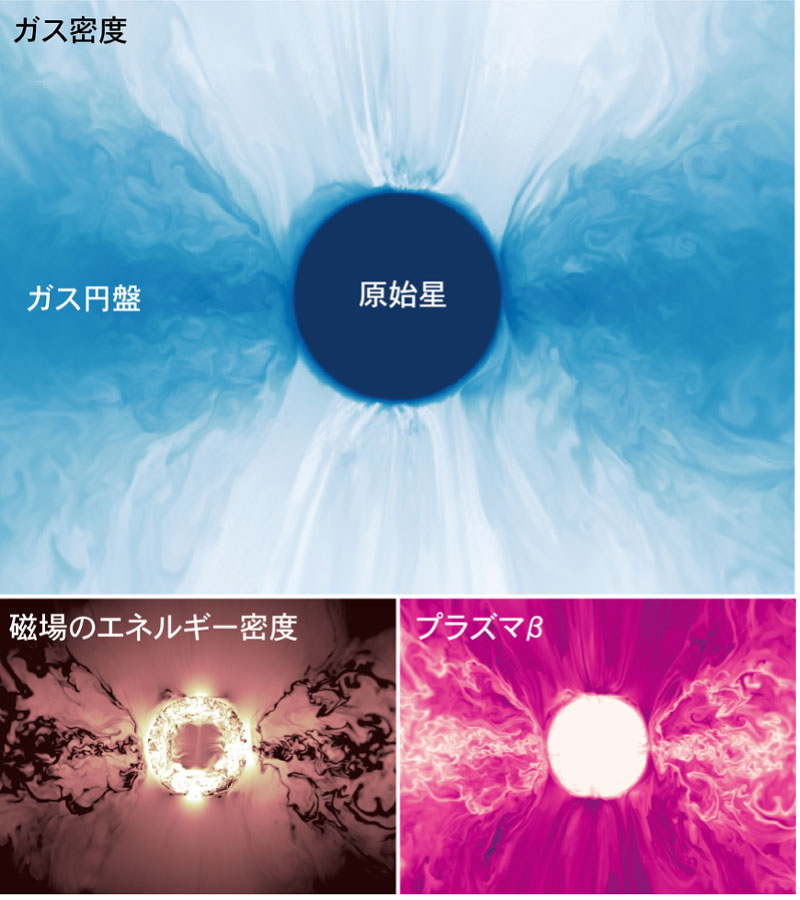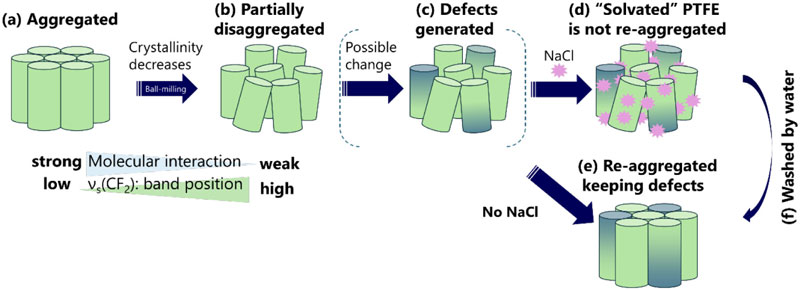2025-05-14 京都大学

原始星が磁化したガス円盤からガスをのみ込んでいる様子。各パネルの図は、円盤の回転軸に沿った3次元構造の断面図を示している。プラズマβは磁場のエネルギー密度に対するガス圧の割合を表し、色が暗い部分ほど磁場が重要であることを意味する。(クレジット:高棹真介)
<関連情報>
- https://www.kyoto-u.ac.jp/ja/research-news/2025-05-14
- https://www.kyoto-u.ac.jp/sites/default/files/2025-05/web_2505_Hosokawa-e455a24c906847336f82c122924e7231.pdf
- https://iopscience.iop.org/article/10.3847/1538-4357/adc37b
磁化円盤と対流性低質量原始星との結合: 境界層降着の全球3次元モデル Connecting a Magnetized Disk to a Convective Low-mass Protostar: A Global 3D Model of Boundary Layer Accretion
Shinsuke Takasao, Takashi Hosokawa, Kengo Tomida, and Kazunari Iwasaki
The Astrophysical Journal Published: 2025 May 14
DOI:10.3847/1538-4357/adc37b
Abstract
In the early stages of star formation, boundary layer accretion, where protostars accrete material from disks extending down to their surfaces, plays a crucial role. Understanding how a magnetorotational-instability (MRI)-active disk connects to a protostar’s surface remains a significant challenge. To investigate the mechanisms of mass and angular momentum transfer, we develop a global, 3D magnetohydrodynamic model of boundary layer accretion around a magnetized, convective low-mass protostar. Our results reveal that angular momentum transport mechanisms transition significantly from the outer MRI-active disk to the protostellar surface. Various mechanisms—MRI, spiral shocks, coronal accretion, jets, and disk winds—contribute to angular momentum transfer, resulting in three distinct disk structures: (1) the MRI-active disk, (2) the transition layer, and (3) the boundary layer. The simulated protostar is strongly magnetized due to the accumulation of the disk fields, wrapping by disk toroidal fields, and stellar dynamo activity. Magnetic concentrations analogous to starspots form on the protostar and interact with the rotating disk gas to generate spiral shocks. These shocks play a key role in driving accretion. These findings demonstrate the necessity of global MHD models for a comprehensive understanding of angular momentum transport. Additionally, we identify explosive events triggered by magnetic reconnection in both the protostar and the disk atmosphere. We also find decretion flows in the disk midplane, which may be important for the radial transport of refractory materials, such as calcium-aluminum-rich inclusions precursor gas, to the outer disk.



